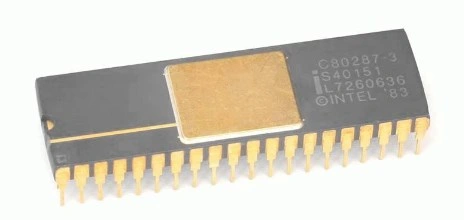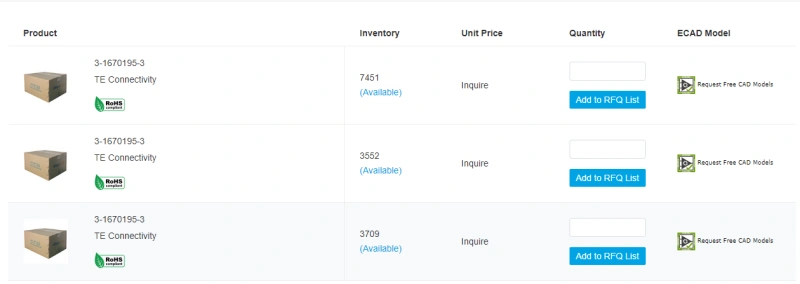OUTLINE:
What Is a Math Processor? How Can I Select and Buy the Math Processor
 469
469Inside the realm of computing, the terms "math processor" and "math coprocessor" are pivotal for the know-how of the evolution and optimization of computational skills, mainly in dealing with arithmetic and mathematical operations.
A math processor, also known as an arithmetic processor, is a specialized figure interior of a laptop's CPU ( Basic Processing Unit) planned to carry out science and scientific calculations. The calculations comprise operations along with expansion, subtraction, increase, division, and more complicated capacities like trigonometric and logarithmic computations. The math processor's essential position is to improve the CPU's capacity to productively deal with numerically in-intensity commitments.

Then again, a math coprocessor (or floating-point unit, FPU) is a separate element or an incorporated part of the CPU that specially hastens the processing of floating-point calculations. Traditionally, math coprocessors had been optional add-ons for structures that required more suitable mathematical competencies, along with clinical calculations, engineering packages, and PC snapshots.
With the development of the era, these coprocessors have turned out to be fundamental components of contemporary CPUs, extensively boosting overall performance for packages relying closely on mathematical computations. Information on the capabilities and significance of those processors is critical for comprehending how contemporary computers acquire high overall performance in processing complicated mathematical operations. This creation units the stage for a deeper exploration into the structure, evolution, and effect of math processors and coprocessors in computing.
What is a math processor
A math processor, frequently called a mathematics processor, is a specialized element inside a PC's CPU (crucial Processing Unit) designed especially to address mathematics and mathematical calculations. This processor is optimized to perform an extensive range of numerical operations efficiently, which includes addition, subtraction, multiplication, department, and more complicated mathematical functions like rectangular roots and trigonometric calculations.
The function of a math processor
The primary function of a math processor is to execute arithmetic operations quickly and efficiently. It serves to:
Enhance Computational Speed:
With the aid of offloading arithmetic calculations from the principal CPU, the mathematics processor lets in for faster typical computation, especially in packages that require huge mathematical processing.
Enhance Accuracy:
Math processors are designed to handle calculations with excessive precision, lowering mistakes that would arise with general CPU processing.
Optimize performance for precise packages:
Duties including 3D portrait rendering, medical simulations, and engineering calculations benefit notably from the enhanced skills of a math processor.
The difference between a math processor and a math coprocessor
1. Integration:
Math Processor: Normally included in the CPU as part of the general processor design.
Math Coprocessor: Historically, a separate chip or a non-obligatory upload- directly to the CPU, designed to handle floating-factor arithmetic operations.
2. Functionality:
Math Processor: Handles both integer and floating-factor arithmetic inside the CPU.
Math Coprocessor: In most cases makes a specialty of floating-factor operations, which can be critical for clinical and graphical computations.
3. Evolution:
In earlier PC architectures, math coprocessors had been distinct additives that would be brought to decorate the CPU’s talents. Modern CPUs normally combine those features without delay, putting off the need for a separate coprocessor.

Types of math processors
Fixed-Point Processors - Designed to address constant-factor arithmetic, in which numbers are represented with a fixed number of digits after the decimal factor. Those are commonly used in virtual signal processing (DSP) applications.
Floating-Point Units (FPUs) - Specialized processors for adapting to floating-point arithmetic, in which numbers are shown with a variable number of digits after the decimal point. FPUs are significant for logical calculations, picture rendering, and any computer program requiring tall precision.

Vector Processors - Able to perform scientific operations on entire clusters (vectors) of data concurrently, irrespective of individual numbers. This parallel preparing capability makes them perfect for applications in clinical computing and actual-time graphics.
Cryptographic Processors - Particular for performing numerical operations required in cryptography, counting secluded science, that is fundamental in encryption and decoding methods.
Tensor Processing gadgets (TPUs) - Superior especially for machine studying obligations, TPUs are planned to deal with the complex numerical operations involved in neural preparation instruction and inference.

Understanding these sorts of math processors and their capacities highlights their basic part in improving the execution and effectiveness of cutting-edge computing systems.
How to select and buy the math processor
How to select the math processor
Deciding on and shopping for a math processor, particularly for unique computational needs, includes numerous key issues. This guide outlines the crucial factors to keep in mind for the duration of this manner.
1. Determine your necessities
- Understand the applications: discover the number one application you will be using. Unique obligations which include clinical computing, 3-D rendering, machine getting-to-know, or cryptographic obligations have unique necessities. Keep in mind whether you need greater floating-point performance (for clinical calculations) or fixed-point performance (for virtual signal processing).
- Performance needs: compare the computational intensity of your obligations. Excessive-performance applications might also require more effective and specialized processors. Check the required precision of your calculations. Obligations needing excessive precision (e.g., clinical simulations) will benefit from advanced floating-point units.
2. Compatibility
- CPU and Motherboard Compatibility: Make certain that the maths processor (or math coprocessor, if thinking about an upload-on) is compatible together with your current CPU and motherboard. This consists of socket type, chipset support, and BIOS compatibility.
- Verify the integration technique: Present-day CPUs regularly have coordinated math handling capacities, diminishing the requirement for partitioned coprocessors. program program compatibility: take a look at your working contraption and computer program program bundles to direct the reasonable math processor you need to buy. a few specialized processors can moreover require specific drivers or computer program program guides.
3. Performance Metrics
- Benchmarking: Look at performance benchmarks that examine specific processors in the context of your programs. This enables gauging actual global performance rather than relying entirely on theoretical specs. remember factors which include clock speed, variety of cores, and particular benchmarks applicable in your responsibilities (e.g., floating-point operations in line with 2d (FLOPS) for medical computing).
- Performance and Thermal design: Evaluate the power intake and thermal design power (TDP) of the processor. better performance regularly comes with accelerated power and cooling necessities. make sure your system can handle the cooling desires of an excessive-performance processor.
4. Future-Proofing
- Consider future needs and whether the processor can be capable of managing increasing computational needs. Choosing a slightly more effective processor than currently needed can provide sturdiness.
- Check for progressed paths: Some structures permit easier enhancements to more powerful processors in the equal family or socket kind.
5. Budget Considerations
- Cost-Benefit Analysis: Balance your finances with the performance necessities. Higher-end math processors come at a premium, so make certain the extra fee is justified through your application desires. Look for deals and bundles that might offer better value, especially for high-performance processors.
- Deciding on and purchasing a math processor involves expertise in your precise computational desires, ensuring compatibility with your present hardware and software program, comparing overall performance metrics, considering destiny requirements, and balancing budget constraints. By cautiously assessing these factors, you may make a knowledgeable choice that enhances your computing overall performance effectively.
How to buy the math processor
If you want to pursue quality and cost-effectiveness, you can log into the official website of Chipsmall to enter the math processor interface to buy, many wholesale buyers in the electronics industry are using this platform!

Check the Price of Math Processor
FAQs
Q: What is the difference between a math processor and a general-purpose CPU?
A math processor is specialized for performing arithmetic and mathematical calculations efficiently, while a general-purpose CPU handles a wide range of computing tasks. Math processors are optimized for tasks requiring high precision and speed in mathematical operations.
Q: Do modern CPUs still need separate math coprocessors?
Most modern CPUs have integrated math processors or floating-point units (FPUs), eliminating the need for separate math coprocessors. These integrated units are capable of handling complex mathematical computations efficiently.
Q: How do I know if my application needs a high-performance math processor?
Applications that involve extensive mathematical calculations, such as scientific computing, 3D rendering, machine learning, or cryptographic tasks, benefit from high-performance math processors. Evaluating your application's performance requirements will help determine the need.
Conclusion
Selecting the proper math processor includes knowing your computational needs, ensuring compatibility with existing hardware and software programs, evaluating performance metrics, and balancing your budget. As computational responsibilities grow to be increasingly more complex, the position of math processors in improving performance and accuracy stays crucial. Using cautiously deciding on a math processor that aligns with your necessities, you may significantly improve your system's performance, especially in packages disturbing sizable mathematical computations. Whether or not it's for clinical research, 3-D rendering, or cryptographic processing, a well-selected math processor can make a considerable distinction in accomplishing the best computational effects.

Disclaimer: The views and opinions expressed by individual authors or forum participants on this website do not represent the views and opinions of Chipsmall, nor do they represent Chipsmall's official policy.

share this blog to:

